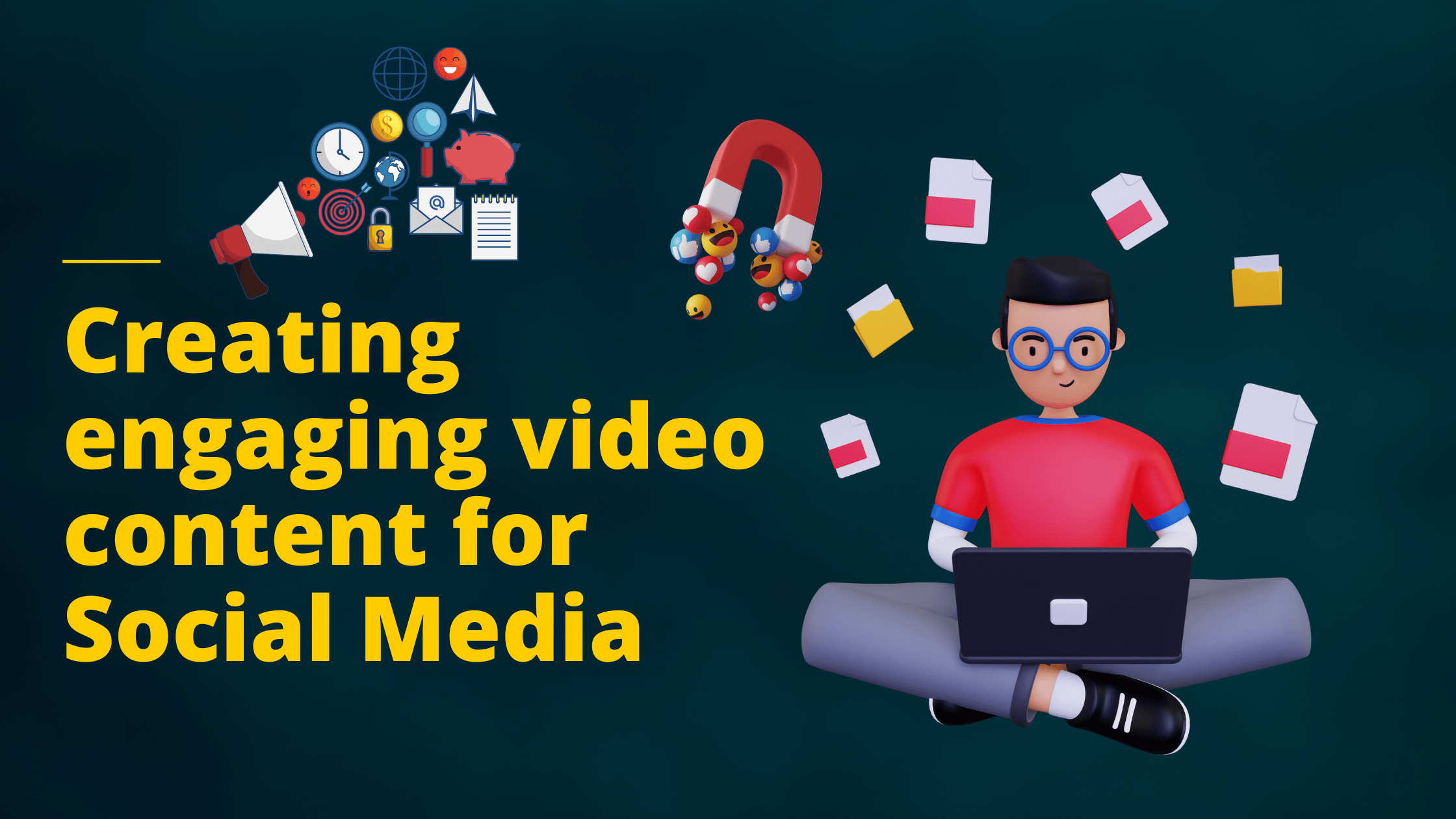Creating Engaging Video Content for Social Media
In the fast-paced world of social media, video content has emerged as a major force. From short, attention-grabbing clips to long-form storytelling, video has the power to captivate and engage audiences like never before. In this comprehensive guide, we’ll explore the art of creating engaging video content for social media, providing you with actionable tips, strategies, and insights to help your brand shine in the digital spotlight.
Video material on social media is expanding
Video Revolution
In recent years, social media platforms have changed dramatically. Text and images are no longer enough to attract users’ attention. Video content, with its dynamic, immersive nature, has become the go-to medium for individuals and businesses alike. Let’s take a look at why video content reigns supreme.
1. Visual Storytelling
Emotional impact: Video allows emotions and stories to be expressed like no other medium.
Brand Personality: This helps define and showcase your brand’s personality and values.
2. User Interaction
Increased reach: Videos get more likes, shares, and comments than text or image posts.
Dwell Time: Longer viewing time keeps users on your social media profiles longer.
3. Versatility
Various formats: Create a variety of content, from short clips (stories) to live streaming and long-form videos.
Social Media landscape
Before we get into the creation process, it is essential to understand the landscape of social media platforms. Various platforms serve a variety of audiences and content types. Here’s a brief overview:
1. Facebook
Audience: A broad audience base, suitable for a wide variety of content.
Video types: Live video, short clips, and longer videos all perform well.
2. Instagram
Audience: Mainly youth, with a focus on visual aesthetics.
Video types: Instagram Stories, IGTV, and Reels offer a variety of options.
3. YouTube
Audience: The king of video platforms with diverse demographics.
Video Types: Long, highly refined videos, tutorials, vlogs, and more.
4. Twitter
Audience: Fast-paced and news-oriented.
Video Types: Short, concise videos and live streaming.
5. TikTok
Audience: Mainly young and very busy.
Video Type: Short, creative and often entertaining videos.
Setting goals for your video content
Before pressing the record button, define your objectives for using video on social media. Your goals may include:
Increasing brand awareness: Introducing your brand or product to a wider audience.
Drive engagement: Encourage likes, shares, comments, and engagement with your content.
Increase conversions: Motivating viewers to take a specific action, like signing up or making a purchase.
Educate and entertain: sharing knowledge or providing entertainment to your audience.
Creating Compelling Video Content
1. Know Your Audience
Research: Understand the preferences, interests, and pain points of your target audience.
Persona development: Create buyer personas to guide your content creation.
2. Content Strategy
Content planning: Outline a content calendar with themes, topics and key messages.
Consistency: Maintain a regular posting schedule to keep your audience engaged.
3. Screenwriting and Storytelling
Storyboard: Plan the structure and visual elements of your video.
Narrative: Craft a compelling story or message that will appeal to your audience.


4. Production Quality
Equipment: Invest in good recording and editing tools for high quality videos.
Lighting and sound: Pay attention to lighting and audio quality.
5. Attractive Thumbnails and Titles
Thumbnails: Create eye-catching thumbnails that persuade people to click.
Title: Create interesting titles that clearly convey the importance of the video.
6. Video Length and Format
Platform specific: Customize the length and format of your video to suit the platform and audience.
Hook Early: Grab the audience’s attention in the first few seconds.
7. Captions and subtitles
Accessibility: Include captions or subtitles for viewers who watch videos with the sound off.
SEO Benefits: Improve searchability by adding keywords to the caption.
8. Connect with your audience
Reply to comments: Interact with your audience by responding to comments and questions.
Live Streaming: Host a live Q&A session or product demonstration.
9. Promote your video
Cross-Promotion: Share your video on multiple platforms to reach a wider audience.
Collaborations: Partnering with influencers or complementary brands for mutual promotion.
Measuring and Iterating Success
1. Analytics and Insights
Track metrics: Monitor views, likes, shares, comments and watch time.
Audience Insights: Learn about the demographics and preferences of your audience.
2. A/B testing
Experiment: Try different video styles, lengths, and content to see what works best.
Iterate: Use data-driven insights to refine your future content.
3. Feedback and Adaptation
Listen to feedback: Pay attention to comments and feedback to improve your content.
Stay current: Keep up with trends and adapt your content accordingly.
Future of video content
Video content on social media is constantly evolving, offering endless possibilities for engagement and storytelling. As technology advances, virtual reality (VR), augmented reality (AR), and interactive video will likely become more prominent. Being agile and experimenting with new formats can keep your brand at the forefront of this exciting digital landscape.
Conclusion
Creating engaging video content for social media is both an art and a science. It requires a deep understanding of your audience, a well-thought-out strategy, and a commitment to continuous improvement. By following the strategies outlined in this guide, you can harness the power of video to connect with your audience, increase engagement, and achieve your social media marketing goals.



